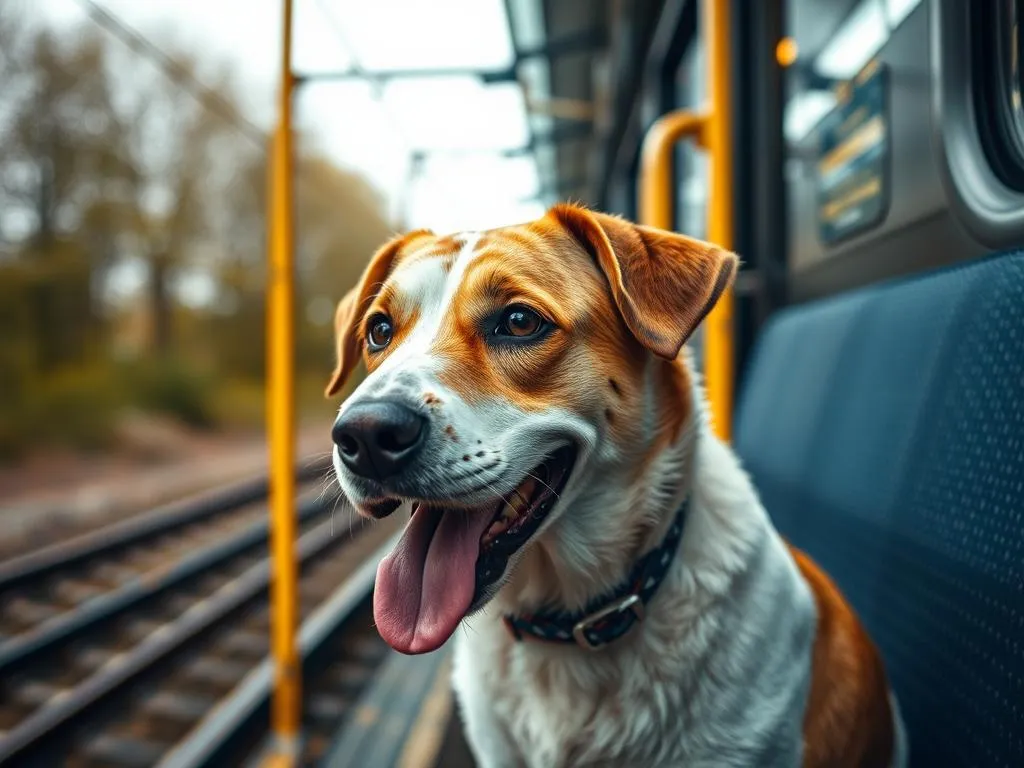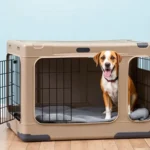
Traveling with your furry friend can be a delightful experience, and many pet owners often wonder, can you take a dog on a train? The answer is yes, but it comes with its own set of guidelines and regulations. In this article, we will explore the ins and outs of taking your dog on a train, focusing on various train services and their specific policies.
Understanding Train Travel with Dogs
General Guidelines
Before you embark on your journey, it’s crucial to familiarize yourself with the general regulations regarding taking a dog on a train. Most train companies allow pets, but the rules can vary significantly depending on the service. Common regulations include size and weight restrictions, as well as requirements for carriers and leashes.
Always check the specific policies of the train company you will be using. Failure to comply with these rules can lead to issues at the station or even being denied boarding.
Benefits of Taking Your Dog on a Train
Traveling by train with your dog offers several advantages:
-
Convenience and Ease of Travel: Trains often provide a more relaxed travel experience compared to cars or planes. You can move around, stretch your legs, and enjoy the scenery without worrying about traffic.
-
Opportunity for Bonding: Taking your dog on a train journey can strengthen your bond. Shared experiences can create lasting memories and help your dog feel more comfortable in different environments.
-
No Need for Boarding Services: Avoid the stress of finding a reliable boarding facility. Traveling together means you don’t have to worry about your dog’s well-being when you’re away.
Train Companies and Their Policies
Amtrak
Amtrak is one of the most well-known train services in the United States, and it has specific policies regarding pets.
-
Pet Policy: Amtrak allows dogs weighing up to 20 pounds (including the carrier) to travel with passengers in designated pet-friendly routes.
-
Size and Weight Restrictions: The maximum size for carriers is 19 x 10.5 x 10.5 inches.
-
Fees and Additional Requirements: There is a pet fee of $25, and dogs must remain in their carriers while on the train.
Regional and Local Trains
Various regional and local train services also have their own pet policies:
-
Metrolink: Allows small dogs (under 20 pounds) on board, provided they are in carriers. Larger dogs may be allowed during non-peak hours.
-
Caltrain: Similar to Metrolink, Caltrain allows dogs in carriers, but they must be muzzled if they are not in a carrier.
These policies can differ based on location and service type, so it’s essential to check with the specific train service before traveling.
International Train Services
When considering international travel, different train services have diverse policies regarding pets:
-
Eurostar: Only allows small dogs in carriers (maximum weight of 10 kg) and requires a pet passport.
-
SNCF (France): Dogs under 6 kg can travel free in carriers, while larger dogs must be leashed and muzzled.
Understanding these regulations is vital for a smooth international journey with your canine companion.
Preparing for Your Train Journey with a Dog
Packing Essentials
When preparing for your journey, ensure you pack the following essentials for your dog:
-
Food and Water: Bring enough food and a portable water bowl for the trip.
-
Leash and Collar: Keep your dog secured with a leash at all times.
-
Comfortable Carrier or Crate: Invest in a durable and comfortable carrier that meets the train company’s size restrictions.
Training Your Dog for Travel
Preparing your dog for train travel is essential:
-
Acclimating Your Dog: Start by taking your dog on short trips to help them get used to the sensation of moving in a carrier.
-
Basic Obedience Training: Teaching your dog basic commands (sit, stay, quiet) will help ensure they behave well during the journey.
Health Considerations
Before traveling, ensure your dog is fit for travel:
-
Vet Checkup: Schedule a visit to the vet for a health checkup, especially if your dog has underlying health issues.
-
Vaccinations and Health Certificates: Some train companies may require proof of vaccinations or health certificates, so check the specific requirements beforehand.
During the Journey
Behavior Expectations
Maintaining good behavior during the journey is key:
-
Calm and Well-Behaved: Train your dog to remain calm and quiet. If your dog is prone to barking or anxiety, consider bringing a familiar blanket or toy to help soothe them.
-
Handling Issues: If your dog becomes anxious or disruptive, take them for a brief walk along the train platform during stops.
Comfort and Care
Ensuring your dog’s comfort during the ride is essential:
-
Comfortable Environment: Make sure your dog has enough space to lie down comfortably in their carrier.
-
Bathroom Breaks and Exercise: Plan for bathroom breaks during stops. If the train schedule permits, take your dog outside for a short walk to stretch their legs.
Interactions with Other Passengers
Traveling with a dog means being considerate of fellow passengers:
-
Managing Interactions: Some passengers may not be comfortable around dogs. Be sure to keep your dog close and avoid letting them approach others without permission.
-
Respecting Comfort Levels: Always respect others’ comfort levels by keeping your dog leashed and under control.
Post-Travel Considerations
Arriving at Your Destination
Once you arrive at your destination, it’s important to help your dog adjust:
-
Settling Into a New Environment: Allow your dog some time to acclimate to the new surroundings. Show them where to find their food, water, and sleeping area.
-
Finding Pet-Friendly Accommodations: Ensure your accommodation is pet-friendly and meets your dog’s needs.
Reflecting on the Experience
After your journey, take some time to reflect:
-
Assessing Your Dog’s Experience: Pay attention to how your dog handled the trip. Were they stressed or comfortable?
-
Tips for Future Travel: Use your observations to improve future travels. If your dog struggled, consider additional training or preparation for next time.
Conclusion
Traveling by train with your dog can be a rewarding experience when planned correctly. Understanding the policies of different train services, preparing adequately, and ensuring your dog’s comfort will lead to a smooth journey. With the right preparations, you and your furry friend can create lasting memories on your adventures together. So why not consider train travel as a viable option for your next trip? Happy travels!









